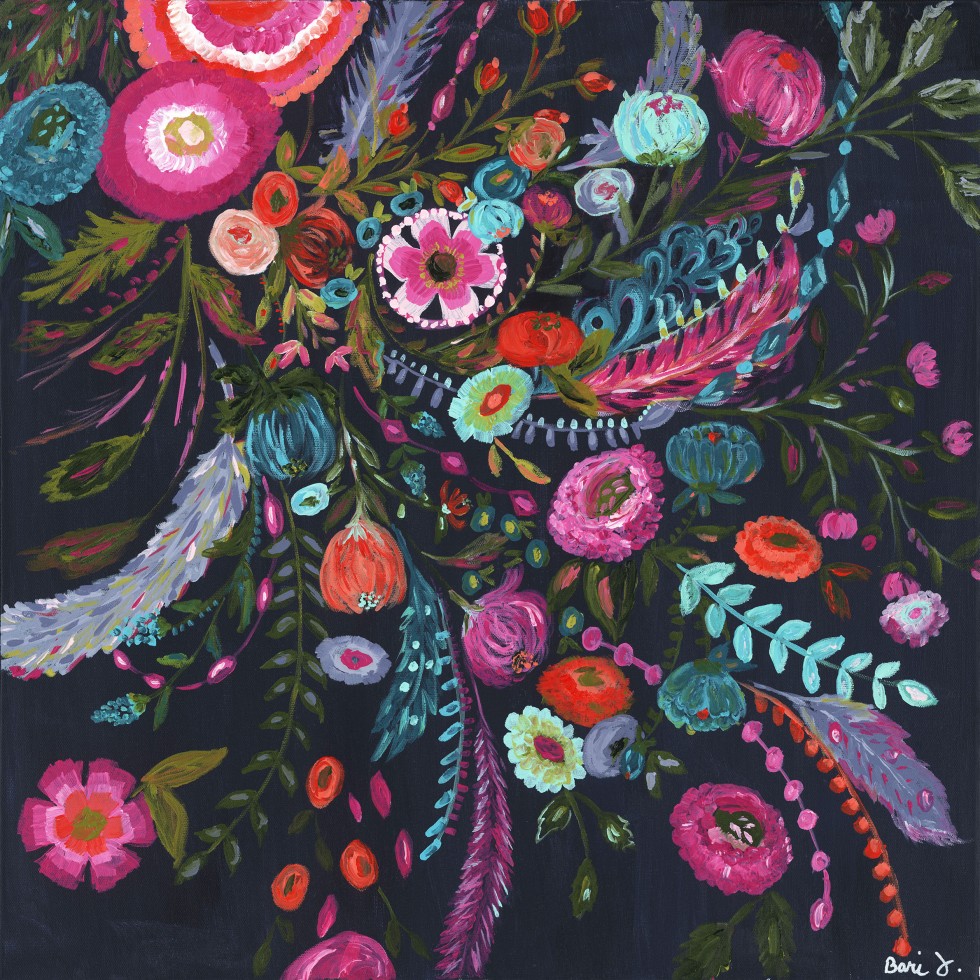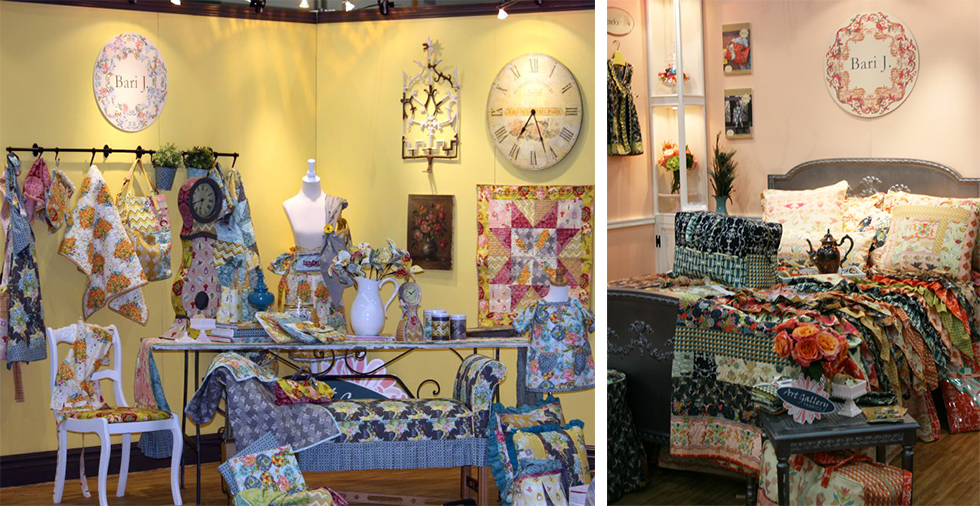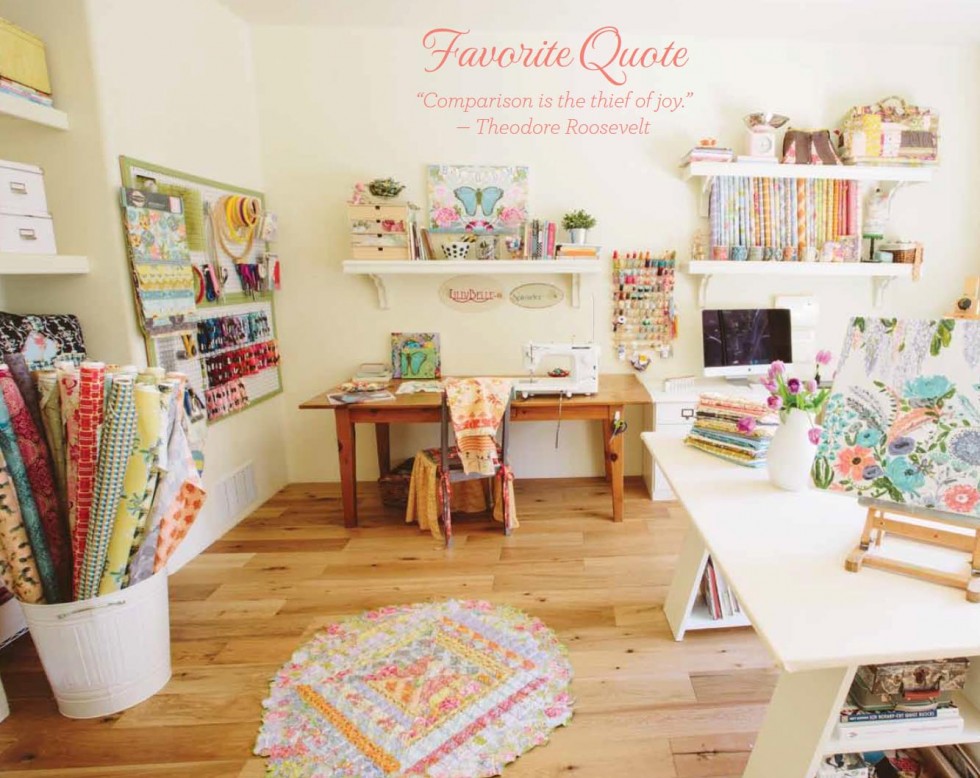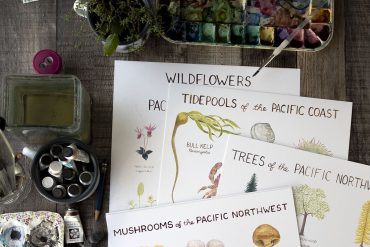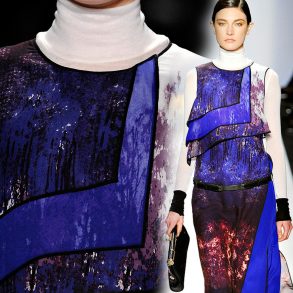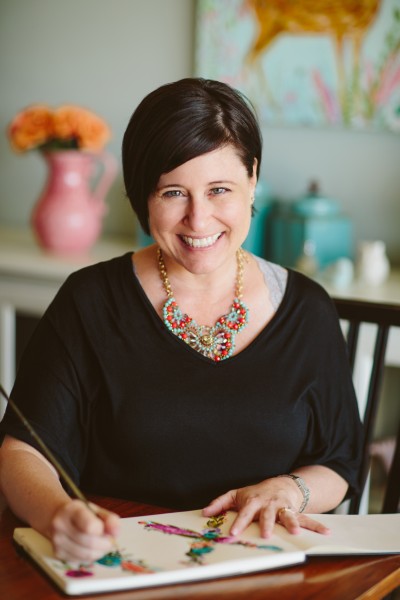
We could not be more pleased to have Bari join us as our guest expert for April in the Textile Design Lab, and we look forward to sharing an excerpt of her training on trade show prep and booth styling later in the month (or better yet, you can become a member to gain access to the full training when it’s released!)
For now get to know Bari and read a bit of her advice and experiences from licensing trade shows in today’s interview:
Tell us a bit about your design background. How did you become interested in textile design and licensing your work?
I had been designing handbags and selling them to boutiques and on ebags.com in their independent designer program starting around 2005. Close to 2007, it became apparent that the fabric handbag market was becoming saturated and that everyone seemed to be using the same fabrics, so I thought I’d simply design my own. I had a graphic design background, so I taught myself how to design fabric (there’s a longer story there… it was a ridiculous amount of practice and patience). I ended up licensing the fabric instead of using it for my own handbags because it was clear that I needed to be in the DIY market. I was constantly being asked for the bag patterns. Etsy had gotten so big, there were just too many handbags on the market. I knew when I got that first line of fabric licensed in 2009, that the plan was always to market my work beyond the fabric industry. In the last year this dream is coming to fruition. My paintings and pattern designs are being made into everything from stationery and journals to dinnerware, puzzles and more… All of which is going to hit the market in the next 6 months to a year.
What do you enjoy most about licensing your artwork?
Seeing the designs come to life in mediums that I hadn’t even imagined.
What would you say are the biggest challenges of licensing?
Getting the contracts. It’s not easy. It takes huge amounts of time and patience. And serious tenacity. My motto (and many people have heard me say this before) is “If you don’t ask, you don’t get”. There’s no magic pill. Most people aren’t “discovered”. They pushed to get where they are and they worked very hard.
What drew you to licensing over selling the copyrights to your designs?
With licensing, you own the copyright. I can take a design I put on fabric and license it to other markets. Owning the designs means you can profit from them for as long as people want to buy them. Selling designs outright means your work is no longer yours. The profit is finite.
Could you talk a bit about the licensing trade shows you have attended?
I have attended Surtex. It is the premier licensing show in the US. In regards to tradeshows, I have done 6 Quilt Market (the lifestyle fabric market is what I’d call it because it’s SO much more than just quilting, but that’s another discussion) booths and several displays within the manufacturer’s booths.
How much work do you usually take with you to show and how do you present it? Do you have any general tips or suggestions for designers interested in exhibiting?
When I exhibited at Surtex, I brought both paper and digital. I did a portfolio book with blurb.com and brought the same book on my ipad. Quilt Market is a whole other beast. For that I sew tons and tons of samples for the line that I’m showing because the buyers are generally quilt shops and small manufacturers. I have tips for both of these trade shows. Some would be the same tips and some would be different. Number one is “do not exhibit before you are ready”. Some would disagree with me, but I tend to think that you shouldn’t do SURTEX until you have at least a couple licenses under your belt. You will definitely be taken more seriously if you do. You’ll spend up to about 10k doing SURTEX including travel etc. That’s a HUGE expense. You might not recoup that for quite a long time. Yes, there are anomalies that make it right out of the gate, but it is a huge risk to take financially. And, there’s definitely more than one way to proverbially skin the licensing cat… Tradeshows are not the be all end all. To get licenses, go to the manufacturer’s websites. Most have submission guidelines. Do not be afraid to submit over and over. Don’t be a jerk, but the truth is that the squeaky wheel gets the grease. Number two is “don’t go overboard”. Try to limit your expenses as much as you possibly can. Have a budget and stick to it. Trade shows are uber expensive. And you won’t always see a return on your investment right away.
How do you handle other artists or student artists who ask to see your work?
If I’m not chatting with a client, I’m happy to show my work to other artists and students. Look, we all know that there are some bad eggs that will copy, but I refuse to be paranoid. I’d so much rather share my knowledge than be wound up about it. All the good you put out there comes back in spades. Plus if we all just swim in our own lanes, we are all good. As my 17 year old daughter says, “you do you”.
What is your follow up process like after a trade show?
I meticulously log all the contacts I get at trade shows. As SOON as I get home I email them. Some I will send pieces they’ve asked for. But keeping good notes is imperative.

So many roles. Artist and designer, marketer, social media crazy person (I’m an Instagram and Pinterest freak), bookkeeper (I HATE that part), web designer… so much more. The good news is that I have aquired lots and lots of skills. Right now I’m everything in my business, but I’m currently working on making a change in that and looking for interns. I truly believe that I won’t miss the money I’ll spend on that and that it will pay off more than I can even think of. As for each day, I’ve taken to really planning out my day in a handwritten planner (gasp! analog!). Each day can be different. I have work to do items and home to do items in separate sections on the same page. And then I have a long term list of goals and to-dos in another divider so I can pull from those.
Where do you gather inspiration for your work? Are there any resources that you recommend?
Pinterest is always a good place to go. However, this is always so hard because I don’t want to be too influenced by what I see on blogs and Pinterest. I do search for images that are ahead of the curve in color and fashion. High fashion and European magazines tend to get the color trends first. I also look for trend reporting. patternbank.com is a really good source. A lot of the time my inspiration comes from something that’s right in front of me: My daughters, the desert, vacations we take, places we visit in town.
Over the course of your career, what actions or decisions have made the biggest impact on your design business?
The best thing I ever did was start painting in earnest a year and a half ago. It has completely solidified my style and has gotten me in more doors than anything else. I think trying new things is key to opening new doors.
What have been the biggest challenges you have faced in your career and how have you overcome them?
Getting the contracts for licensing has been a true challenge. Not giving up, being extremely patient and having a very thick skin is how I’ve gotten through.
What advice have you received in your career that has stayed with you or influenced you? Do you have any words of advice for aspiring designers trying to build successful careers of their own?
Another designer, a couple other friends and I were having a discussion one night after quilt market. We were talking about how there’s room for everybody in this industry. I agree. There is room for everyone in this industry as long as “you do you”. Keep your eyes on your work, don’t compare yourself to others, swim in your own lane, and always remember that you are on your own journey… however you want to word it works. One person’s path is not good for everyone. I keep hearing things like, “I think the next step after writing a book or publishing patterns is getting a fabric line”. Not necessarily. There isn’t a formula for success and success looks different to each person. So if you have a fabric line do you have to do patterns and write a book or visa versa? No. Do what you love to do. A good quote is, “A flower doesn’t compare itself to other flowers, it just blooms.”
Aside from always be yourself… Be absolutely fearless and resolute in the fact that you WILL succeed (it may take a whole damn decade, but you will succeed). Put your biggest brave on and go for it. No one who didn’t ask ever heard a “yes”.

